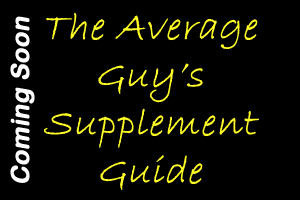Today's topic came about as I was reading some articles/blogs from other trainers/coaches. It seems the same questions come up over and over, and fitness professionals all over are answering the same questions. I thought I would address some of them here. We have certainly talked about a lot of these items in past newsletters, so it may be a reminder to some of you.
1) Women Will Not Get Bulky Lifting Weights:
It amazes me people still believe this old myth. I would think with all the literature out now and how common strength training has become for women, this fallacy would have disappeared. Let me reiterate one more time – women will not get big and bulky from lifting weights unless that is what they specifically want to do. It takes hours and hours of very heavy weights with lots and lots of volume to pack any muscular weight on a female frame. It just is not physiologically possible with general fitness programs. With general fitness populations and even most sport specific training, there is simply not the workload necessary to create that physique. If I see one more woman in the public gym doing squats while holding a 3-5 lb dumbbell, I won't be responsible for my action. So, let's put that myth to bed once and for all. If you are weight training three times per week with emphasis on total body movements, you will not get bulky. End of story!
2) Low Calorie Diets Don't Work:
Human beings require a certain amount of kilocalories daily just to keep our bodies functioning. All our cells require nutrients to survive. Drastically cutting calories to under 1000 calories a day, not only will stall any weight loss attempts but is dangerous to your health over the long term. There are certain weight loss clinics that advocate very low (700-800 calorie) diets. Along with the very low calories, they advocate vitamin shots and no exercise while you are on their program – does it make you wonder just how healthy the program can be? As a minimum, take your weight in pounds, multiply by 10, and that is the minimum calories you should consume per day. Example, a 150 pound person would eat 1500 calories/day minimum.
3) Let's forget the "Fat Burning Zone"
On most cardio machines today, you will still see the graphs depicting heart rate training zones. This is another example of old technology and outdated science. It is amazing how many trainers are still coaching aerobic sessions to be in the 60-70% heart training zone. It is not that the "FBZ" doesn't have a place. It most certainly does. It is a great start for those that are new exercise and especially if you are new to aerobic style
workouts and not accustomed to interval training. Low training thresholds can also be beneficial for recovery workouts. But, if you have an exercise history and are accustomed to working out, then the FBZ is not the most beneficial form of aerobic training. For fat/weight loss, aerobic workouts should be high intensity and short. Heart rates should be in the 85-95% of MHR and done in an interval style with a very short, high intense portion followed immediately by a lower intensity recovery portion. For example, 30 sec to 1 minute high intensity followed by 2 minutes recovery, repeated for 20 -30 minutes. – Workout done! Please remember also that aerobic training or cardio work (more correct phrase would be "conditioning work") does not have to entail a treadmill, elliptical or any other typical cardio machine. Some examples of conditioning workouts could encompass kettlebell swings, jump squats, skipping rope, mountain climbers. There is a endless variety of exercises that could be strung together to make up a conditioning workout. Conditioning workouts are all about the intensity and getting your heart rate elevated.
To recap today's newsletter: Don't be afraid of lifting weights. Eat a healthy diet with adequate calories. High Intense Cardio Conditioning = mean, lean body built for summer shorts and t-shirts.
Till next time,
Narina
